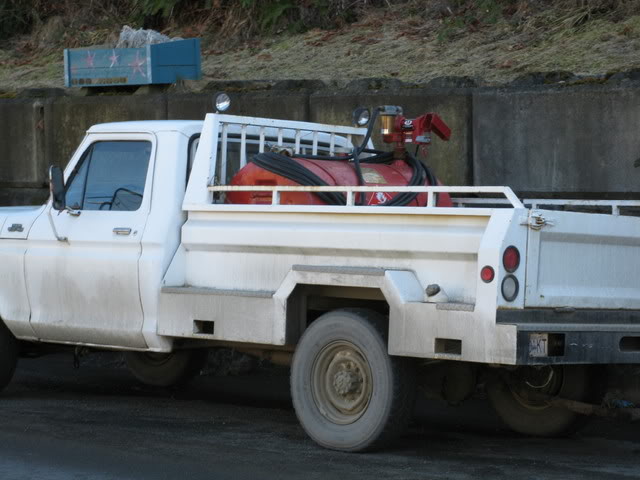During the USFS public comment periods and throughout our community outreach efforts, we have worked hard to respond to the concerns and to correct the misconceptions some Idahoans understandably have about the CuMo Project.
The historic environmental quality issues will worsen because of CuMo.
Grimes Creek and Mores Creek had extensive historic placer mining operations which left behind millions of tons of dredge tailings on the banks of both creeks. Both waterways are considered contaminated by the Idaho Department of Environmental Quality. CuMo firmly believes that CuMo will have no negative effects on water and environmental quality in fact the management team believes that there is a large-scale reclamation opportunity in Grimes, Granite and Mores Creeks.
Watch Video Tours of AreaThe CuMo Project will adversely affect water quality in Boise River.
The CuMo Project employs modern mining practices to mitigate discharge from exploratory drilling – “closed-loop” drilling. This process limits the potential for drill fluid losses or gains that might affect local water quality. The Project is near the headwaters of Grimes Creek which flows into Mores Creek and ultimately the Boise River 38 miles away. No toxic materials are associated with the CuMo Project and modern mining practices require careful monitoring to assure safety.
The CuMo Project shows no signs of producing toxic waste.
All scientific studies to-date indicate that none of the CuMo Project’s waste rock is toxic. The waste rock is regular granite with a higher-than-normal carbonate content which acts as a buffer against any possible acidity.
Arsenic will be released by the CuMo Project.
First, modern mining monitoring practices ensure that leaching does not occur. Second, the Project site is at low risk for arsenic leaching because of the naturally occurring chemical make-up of the water. The water in the proposed Project area is above pH 7, or “basic”, which makes it very difficult to leach arsenic and any other metals into the environment. Third, the high carbonate content of the surrounding soil and rocks ensures that water will remain basic, decreasing the risk of leaching.
Finally, water analyses by Idaho DEQ indicate that historic waste dumps located near the project are not leaching arsenic into the local streams. All measurements to-date have returned values considerably less than current drinking water standards.
There are endangered animal and plant species in the Project area.
There has been no sign of grey wolf, great grey owl and northern goshawk in the proposed area. Studies detected one male wolverine that passed through the area looking for a mate. No female wolverines were detected near the Project area, therefore the male did not stay nor does the area show any signs of denning. Additionally, the prevalence and resiliency of native plants, such as the Sacajawea bitterroot, makes the exploration a very low risk to sensitive vegetation.
Studies have indicated that the Sacajawea bitterroot loves disturbed soils and thrives on old drill roads and exploration drill pads.
Reclamation and restoration costs will be paid by Idaho Copper Corporation.
Federal surface management regulations require mining companies submit a cost estimate and a financial guarantee, or a non-recoverable bond, used to pay for the reclamation and restoration plan as part of the original permitting process. Nowadays, no mine can go into production without a reclamation plan, and without putting up the bond required to perform the reclamation. Idaho Copper Corporatio has placed a $300,000 bond to cover the planned exploration to protect the taxpayers from footing the bill for any cleanup.
Worldwide demand for Molybdenum is growing.
The U.S. is the second-largest moly producer in the world and home to three of the world’s eight moly mines. Twenty-five percent of the global supply of moly comes from domestic U.S. sources. The CuMo Project could become the largest and most economically sustainable source of molybdenum and the answer to the growing worldwide demand while positively impacting local, state and regional economies.
Also, Idaho and the U.S. are losing market share and jobs as high cost producers like Thompson Creek are forced to close. As a low-cost producer, CuMo would be able to survive the boom and bust mining cycles, thus providing stability in terms of employment and tax revenue for the entire mine life.
An Environmental Impact Statement must be done for CuMo Project exploration.
The U.S. Forest Service has issued a finding of No Significant Impact in 2011, and in 2013 updated its finding in a Supplemental Environmental Assessment and re-affirmed their finding in 2015. All scientific studies conducted by the Forest Service and third-party contractors indicate and validate that the CuMo Exploration Project bears no substantive impact on the environment; therefore, an Environmental Impact Statement is not warranted.
Since 1990, many modern mines have been classified Superfund sites.
The reason is simple: current regulation is protecting the environment. Comprehensive environmental laws, regulations and practices – continually improved and adjusted to take into account lessons learned from experience – work together with financial assurance requirements to ensure today’s hardrock mines do not become tomorrow’s Superfund sites.
Huge amounts of fuel are required to support the exploration program.
The CuMo Project will use slip tanks in the back of pickup trucks that carry less fuel than a logging truck. In fact, home heating oil deliveries in the area carry several times more fuel than that required support of the CuMo Project exploration effort.
The CuMo Project can help Idaho recoup some well-paying jobs lost during the recent recession.
In comparison, the average income of Idaho’s middle earners is $47,000. In the current phase of exploration, the CuMo Project plans to hire 50-60 local workers and spend $100 million – money that will benefit local families and economies. If the project is approved, 5,000 high-wage jobs would be created during the mine construction phases, followed by 1,000 jobs during the mine’s life.
DISPELLING MYTHS AND PRESENTING FACTS




